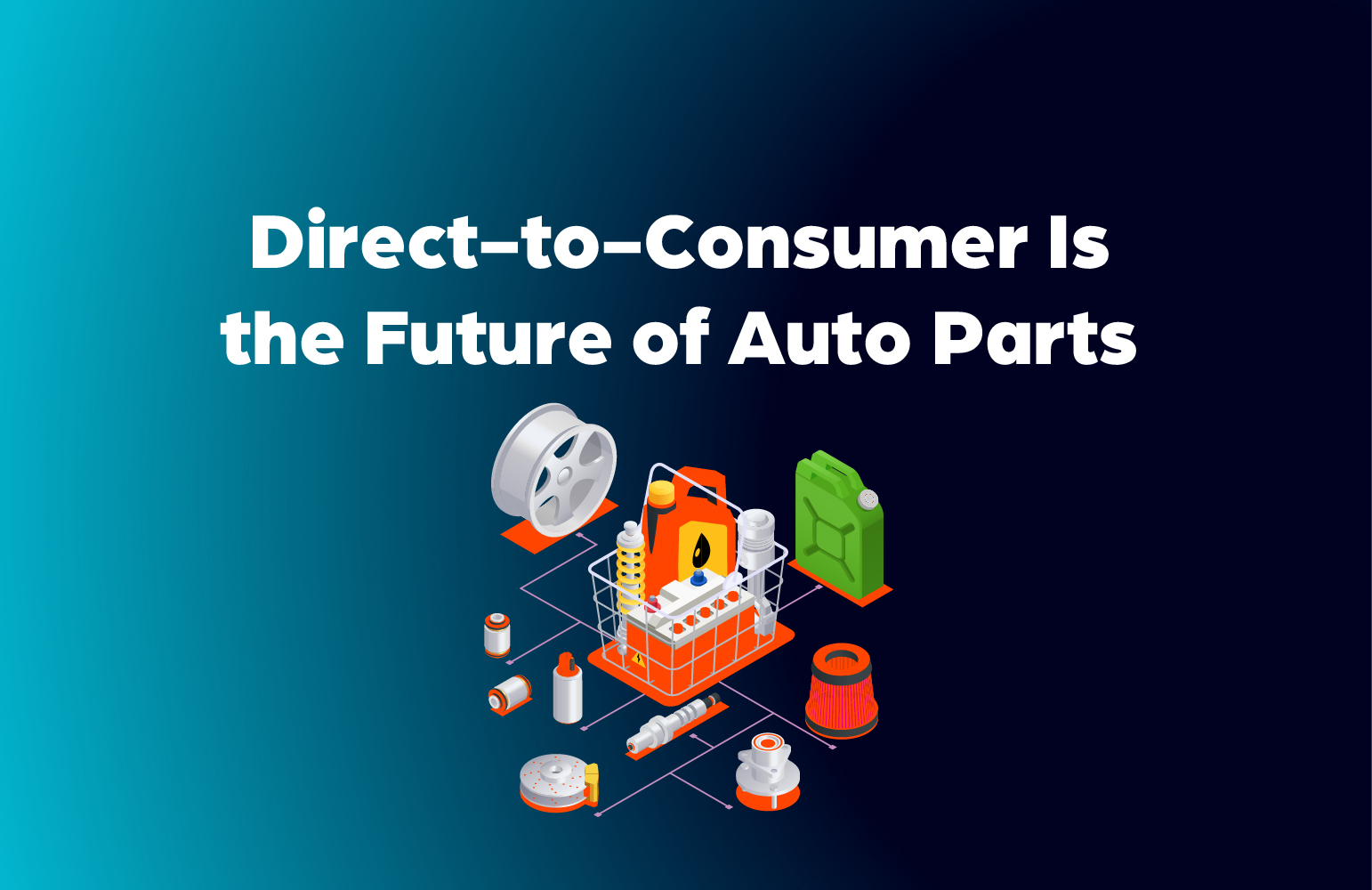The aftermarket is changing — and sellers are taking control
For decades, the auto parts industry has relied on long distribution chains. Manufacturers sold to importers, who sold to distributors, who sold to local garages or resellers. But in recent years, a quiet revolution has been reshaping the landscape: auto parts sellers are going direct-to-consumer (DTC).
Whether it’s a brand, wholesaler, or garage, more businesses are bypassing traditional middlemen to sell online — directly to drivers and repair professionals. And the shift isn’t just about margins. It’s about data, speed, flexibility, and owning the customer relationship.
In this article, we’ll explore why the shift to DTC is happening, what it means for sellers, and how to navigate the transition successfully.
1. Margins are tighter than ever
Auto parts sellers often operate on razor-thin margins. Traditional B2B distribution models eat into profits at every step — and leave sellers with little pricing power.
By going DTC:
- Sellers eliminate intermediary costs
- They control final pricing
- They keep a larger share of revenue
This model is especially attractive for brands and wholesalers that want to maximize margin while maintaining quality control.
2. Customers are getting more comfortable buying online
Drivers used to rely on local mechanics to handle parts sourcing. Today, with the rise of DIY culture, YouTube repairs, and ecommerce literacy, more customers are:
- Researching parts themselves
- Comparing prices online
- Buying directly from websites or marketplaces
This behavioral shift has opened the door for auto parts sellers to meet customers where they already are: online.
Bonus: DTC doesn’t mean you only sell to end users. Many small garages now prefer to order directly online for faster service and broader selection.
3. Platforms make it easier to launch
Setting up an online store used to require custom development, warehouse infrastructure, and a huge upfront investment. That’s no longer the case.
Modern tools allow sellers to:
- Launch fast on platforms like Shopify or WooCommerce
- Sync catalogs and manage inventory with ease
- Integrate shipping, payments, and compatibility tools
This means the barrier to entry is lower than ever, and even traditional B2B sellers can now go online in a matter of weeks.
4. Data ownership = growth
One of the most underrated advantages of going DTC? You own the customer data.
Instead of relying on wholesalers or marketplaces to control the buyer relationship, sellers who go direct can:
- Track purchasing behavior
- Collect emails and build retargeting audiences
- Learn what products perform best and why
This allows for smarter marketing, better product development, and personalized customer experiences that simply aren’t possible in old-school channels.
5. Product education drives conversion
Auto parts can be technical and intimidating. But when you sell direct, you control how your parts are presented. This creates an opportunity to educate and support customers — turning confusion into clarity.
Examples of effective DTC education:
- Compatibility guides
- Installation videos
- Side-by-side comparisons (OE vs aftermarket)
- Content that answers “Will this fit my car?”
Sellers who take the time to guide buyers build trust — and reduce return rates.
6. Marketplace dependency is risky
Many sellers rely heavily on platforms like Amazon or eBay for online sales. These channels have huge reach, but come with trade-offs:
- High fees
- Strict rules and sudden policy changes
- No access to customer data
- Constant price wars
By going DTC, sellers create a channel they control, reduce platform risk, and protect their brand from commoditization.
7. The next generation expects more
Younger car owners — and even many professional buyers — are used to intuitive ecommerce experiences. They expect:
- Mobile-friendly interfaces
- Fast shipping and tracking
- Easy returns
- Clear part search tools
Traditional B2B processes don’t cut it anymore. DTC sellers that prioritize customer experience will win loyalty in a changing market.
Why this matters: DTC isn’t just a trend — it’s a strategy
Going direct doesn’t mean shutting down your other channels. It means owning a piece of your growth — and building a brand that lasts.
The sellers embracing this shift aren’t just chasing margins. They’re building faster, more agile operations with better data, closer customer relationships, and smarter marketing.
Final thoughts: Take the driver’s seat
The auto parts industry is evolving. Selling online — and selling direct — gives you the tools to stay ahead.
Whether you're a supplier, importer, or retailer, exploring a DTC model can give you:
- Better margins
- More control over your brand
- Direct access to your customers
- Flexibility to grow on your own terms
You don’t need to replace your entire business model overnight — but building a direct channel puts you back in the driver’s seat.
FAQs
What does “direct-to-consumer” mean in the auto parts world?
It means selling parts directly to end users — whether drivers or garages — without relying on traditional wholesalers, distributors, or resellers.
Is DTC only for brands?
Not at all. Importers, garages, resellers, and niche specialists can all build DTC channels. It’s about who controls the sale — and the relationship with the customer.
Can I still sell B2B while going DTC?
Absolutely. Many sellers run both models in parallel. The key is having the infrastructure to serve both efficiently.


